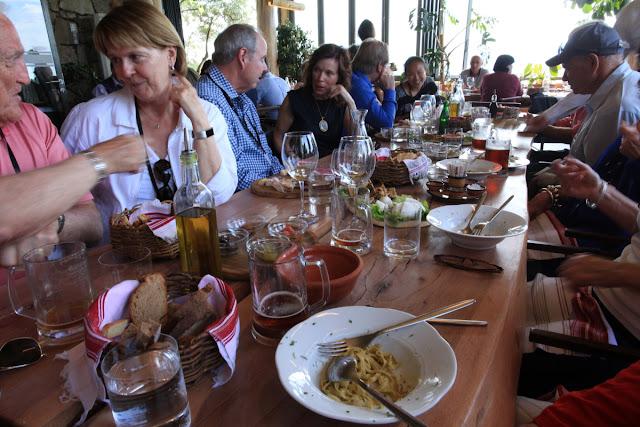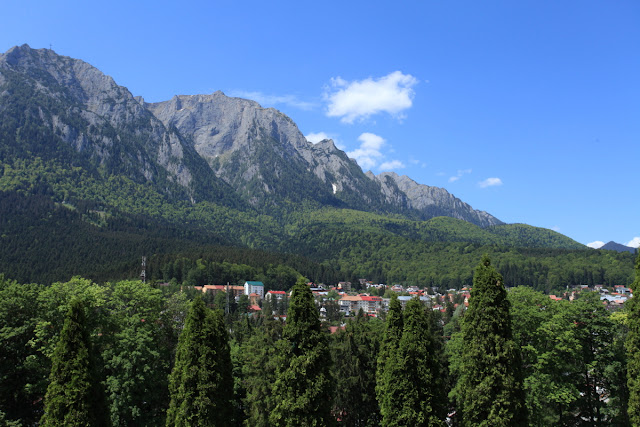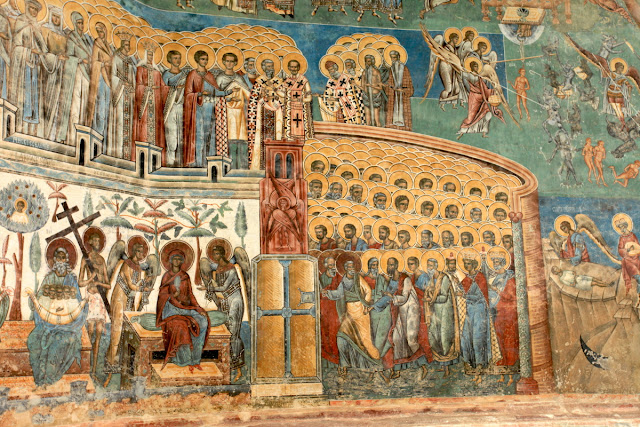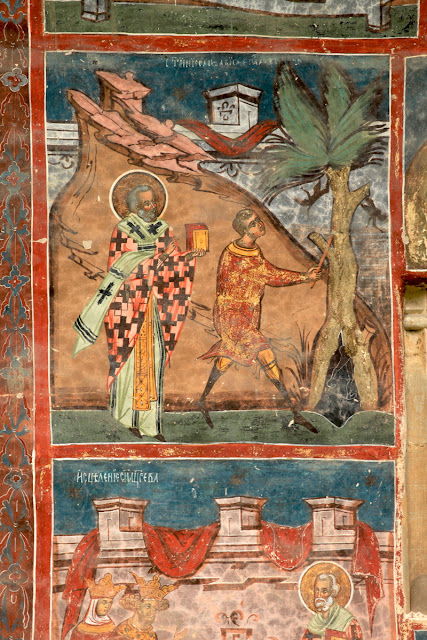Tirana, Albania
Map of Albania showing surrounding nations, Tirana the capital, and Skoder and Lake Skoder.
Skodra, Albania
I opted for a full day tour to the northern city of Skodra (also spelled Shkodër). Our objective was to visit the Rozafa Castle located on the hill seen here. Check out the link provided for a more detailed explanation.
Walking up on the old road. We left the capital early to beat the crowds. That was a very good thing.
Once on top of the hill we could see why this was such an incredible place to build a castle - the hill is located at the confluence of three rivers. This view to the south shows two of the rivers coming from the distant mountains in the background, known as the Albanian Alps.
View to the north to the modern city of Skodra with some of the castle ruins in the foreground. Look a those cirrus clouds! I love watching them.
There are three concentric walls and this is the entrance through the outer wall. Note the city in the background. Beyond the city is the border with the country of Montenegro.
Cobblestone road in the entrance.
Looking out beyond the outermost wall.
View to the north from Rozafa Castle to the city of Skodra.
This view is the left of the one above and shows the third river in the area. Look closely and you can see it is a short river and begins when water leaves Lake Skodra, visible in the left background.
Turning downstream on the Skodra River where it joins the other two river. Note the Albanian flag.
One more turn to the left showing where the two rivers approach the Skodra River.
Spring was in full bloom and these poppies reveal here the color for the flag was obtained.
Everywhere we went young people engaged us as they often do not see Americans. However, European tourism is strong in al of the countries that we visited.
After passing the second wall, we encountered the old church, whose bell tower had been converted into a minaret when the Ottoman's invaded the area in 1478. I love those clouds visible here. What a day!
Inside the modern city of Skodra, where the old streets are welcoming and beautiful.
One of the things these trips do not lack is plenty of good food. We stopped at a very local Albanian restaurant located about halfway between Skodra and Tirana. The food was excellent as well as the beer! It was busy with locals - we were the only visitors here. Fourteen courses had everyone in our group raving about the day.
Our ride back to the capital passed through some beautiful landscapes. The Albanian Alps are a place I could envision returning to with striking mountain scenery protected in National Parks. I think my strongest take-away from Albania was realizing how words - such as Albania - can create impressions, feelings, and even judgements that are not necessarily true. Had I visited this country during the 1960s and 1970s, my impressions may have been quite different. But Rozafa Castle, the Albanian Alps, and the cirrus clouds on a sunny day would have still been there, Our next country only confirmed this observations.
Bucharest, Romania
As five of the nine counties visited on this trip are new to me, I only learned something about their history - anything - only a few days before touchdown. The ability to quickly learn about a country's history is really an artifact of living in this modern, wired world. Sure, there were printed travel guides in the "old" days but having ready access to many documents at once is a sure sign of modernity. As I learned, Romania has a fascinating history and landscape.
Map of Romania showing Bucharest, Pelaş, and Bucovina.
A Triumphal Arch that was designed after the one in Paris. An original wooden arch was built here to honor Romanian independence in the 1870s and this version was constructed and dedicated in 1936.
Romania is a proud member of the European Union.
The fire from my 7th floor hotel room to the east in Bucharest.
The Royal Palace of Bucharest, now an art museum.
An old Orthodox Church in the heart of Bucharest. Lots of outdoor cafes lined the streets of the city.
On our 2nd day, we headed north into the Carpathian Mountains where the Pelaȿ Castle is located. More of a mansion than a castle, the interior was astounding in its over-the-top size and design. From the Wikipedia site:
When King Carol of Romania (1839–1914), first visited the site of the castle in 1866, he fell in love with the magnificent mountain scenery. In 1872, the Crown purchased 500 square miles of land and the estate was named the Royal Estate of Sinaia. The King commissioned the construction of a royal hunting preserve and summer retreat on the property, and the foundation for Peleș Castle was laid on 22 August 1873 and interior redesign continued until his death. Several out buildings were also constructed: a guards' chambers, a hunting lodge, royal stables, and a power plant. Peleș became the world's first castle fully powered by locally produced electricity.
There are numerous statues at the entrance of the castle/mansion.
After ascending a red carpeted stairway, the entry room was attained. Three stories high and full of ornate woodwork.
King Carol I (pronounced Karl) was very fond, of his weapons collection with many pieces dating back to early Medieval times.
Here is a fully outfitted armored horseman as he might have looked in the 14th century.
The stained glass windows were quite impressive.
Portrait of a young King Carol of Romania.
A scene from the music room.
This is not a nickel-plated bathtub in one of the 33 bathrooms, it is a solid nickel bathtub.
The largest guest bedroom where Franz Joseph I of Austria slept for one night only.
The main dining table with an opening to the third floor of the entryway. I have not previously had much experience with European castles and I understand that "castle fatigue" can be as undesirable as "church fatigue" in Italy. However, I was pleasantly surprised with this visit. While I might not return to this castle, The Carpathian Mountains hold a lot of interest to me.
Bucovina, Romania
We once again returned to our jet for a "commuter trip" to the northeast part of the country, a region called Bucovina. It was a one hour flight from Bucharest to this area, very near the neighboring country of Moldava.
Map of the regions in Romania.
Bucovina lies on the northern fringe of the Carpathian Mountains and this view to the south shows the low hills at the base of the range. It was green and hilly and very interesting to me.
The reason for our journey north was to see two beautifully painted and preserved monasteries. These have been declared UNESCO World Heritage sites for the preservation of their 15th and 16th century frescoes.
Where the walls are exposed to rain and snow, the frescoes are weathered...
...but where they are protected, they are wonderful.
I used my zoom lens to bring out the detail.
We were not allowed to photograph the frescoes in side the church and these are ones that have sat out in the elements for nearly five centuries.
While visiting the sites, some of our group were interviewed by a local news team. They had heard that our special group was flying into the area for the day to see the sights. I was told we could see the story later that night (May 14) on their web site (digi24.ro). But I do not read Romanian and could not navigate the site.
A more modern Orthodox church near the site of the monasteries.
Driving through the countryside was very enjoyable an where a shepherd and his sheep dog watch over the flock. I would love to travel back to Romania, and authentic European destination.















































Great photos Wayne. Getting me excited for my visit to Bulgaria, Romania and Budapest in October. We’ll see 14 Unesco sites- who knew these countries have such gems as well as such beautiful scenary.
ReplyDeleteI just wanted to know if you know anything about these names for Romania historically: Morcala, Ghanala, Mernala, Renela, Laka, Bala, Ghena, Ghenala, Ginser, The Gitsers, Miss Lock, Senser Inter, Ola , Molak, Enela, Onala, Lava, Merlina, Sennela, Inkener, Morkala, Ursala, Sernala, Merka. They're from something called Romania Underground Lockers. I can't find any more information about it. If not thanks anyway.
ReplyDelete